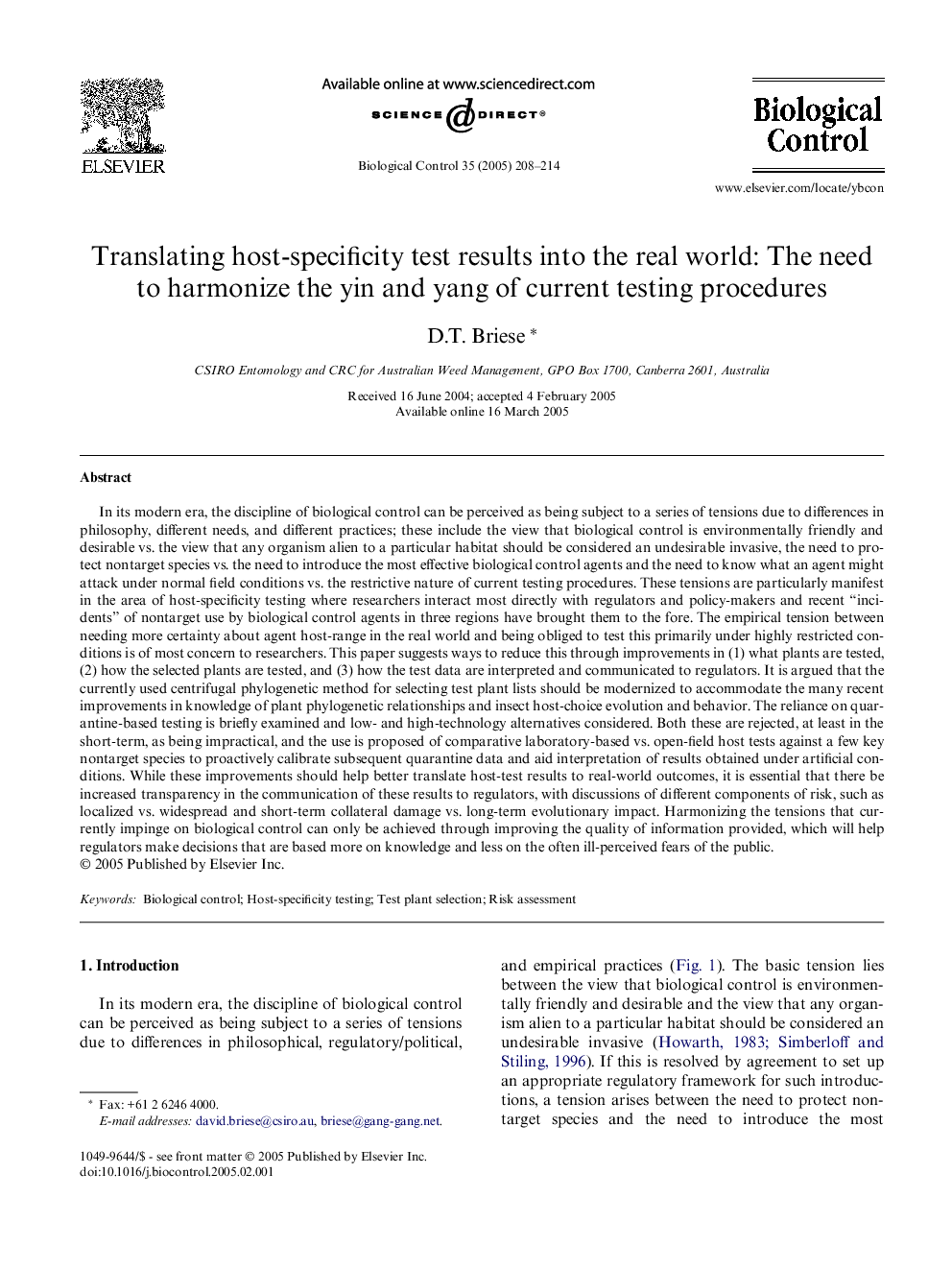| Article ID | Journal | Published Year | Pages | File Type |
|---|---|---|---|---|
| 9471889 | Biological Control | 2005 | 7 Pages |
Abstract
In its modern era, the discipline of biological control can be perceived as being subject to a series of tensions due to differences in philosophy, different needs, and different practices; these include the view that biological control is environmentally friendly and desirable vs. the view that any organism alien to a particular habitat should be considered an undesirable invasive, the need to protect nontarget species vs. the need to introduce the most effective biological control agents and the need to know what an agent might attack under normal field conditions vs. the restrictive nature of current testing procedures. These tensions are particularly manifest in the area of host-specificity testing where researchers interact most directly with regulators and policy-makers and recent “incidents” of nontarget use by biological control agents in three regions have brought them to the fore. The empirical tension between needing more certainty about agent host-range in the real world and being obliged to test this primarily under highly restricted conditions is of most concern to researchers. This paper suggests ways to reduce this through improvements in (1) what plants are tested, (2) how the selected plants are tested, and (3) how the test data are interpreted and communicated to regulators. It is argued that the currently used centrifugal phylogenetic method for selecting test plant lists should be modernized to accommodate the many recent improvements in knowledge of plant phylogenetic relationships and insect host-choice evolution and behavior. The reliance on quarantine-based testing is briefly examined and low- and high-technology alternatives considered. Both these are rejected, at least in the short-term, as being impractical, and the use is proposed of comparative laboratory-based vs. open-field host tests against a few key nontarget species to proactively calibrate subsequent quarantine data and aid interpretation of results obtained under artificial conditions. While these improvements should help better translate host-test results to real-world outcomes, it is essential that there be increased transparency in the communication of these results to regulators, with discussions of different components of risk, such as localized vs. widespread and short-term collateral damage vs. long-term evolutionary impact. Harmonizing the tensions that currently impinge on biological control can only be achieved through improving the quality of information provided, which will help regulators make decisions that are based more on knowledge and less on the often ill-perceived fears of the public.
Keywords
Related Topics
Life Sciences
Agricultural and Biological Sciences
Agronomy and Crop Science
Authors
D.T. Briese,
